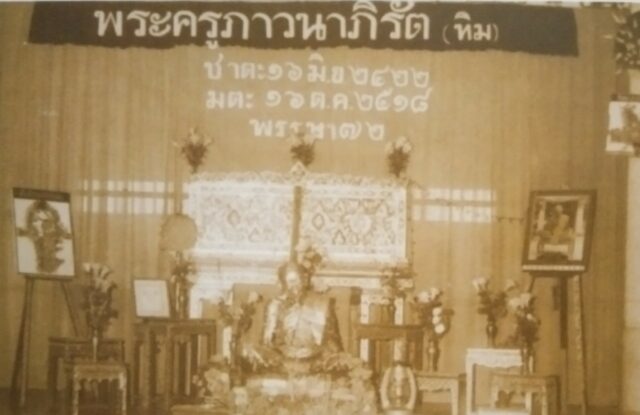Biography of Phra Kru Pawanapirat (Luang Phor Tim Issarigo), of Wat Lahan Rai Temple (2422 – 2518 BE)
Pra Kroo Pawanapirat, or, commonly known as Luang Phor Tim Issarigo, was born on the 16th May in the year 2422 Buddhist Era, This was during the time of His Majesty King Rama 5. Luang Phor Tim was born in Ban Hua Tung Ta Budtr in Tambon Lahan, in Ban Kaay Municipality of the Province of Rayong. LP Tim lived to the age of 96 years old, when he passed away on the 16th October in the year 2518 BE, with 69 years of ordained life behind him.
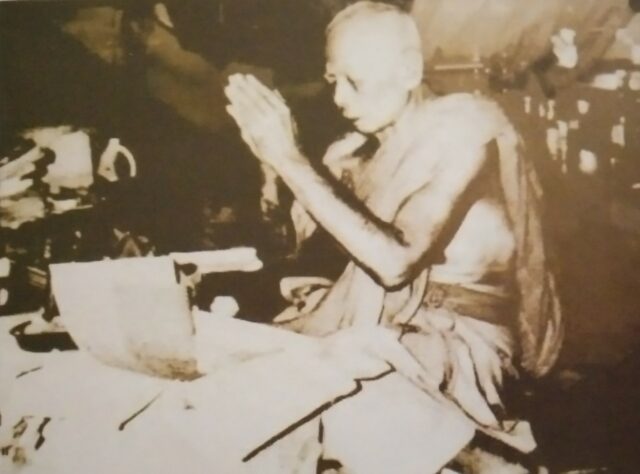
LP Tim was born in the year of the goat, with the name ‘Tim Ngaam Sri’ son of Mr Jae. amd Mrs. Intr, in the village of Hua Tung Dta Budtr, in Moo 2 road of Tambon Lahan Rai. Luang Phor Tim was the 2nd child of a 2 child family. When Luang Pu Tim reached the age of 17, his Father, Mr. Jae, decided to take him and place him under the mentorship and tutelage of Luang Phor Singh, who taught him to read and write, and schooled him over a period of 1 year.
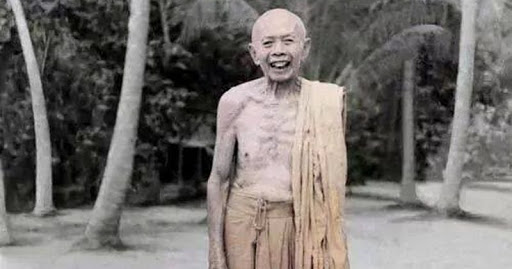
Luang Pu Tim was the Looksit in Magical Wicha to Kroo Ba Sangkh Tao, of Wat Geng Jeen Temple, as well as being a direct family relative (Great Nephew). Luang Pu Tim was ordained as a Bhikkhu Monk on the 7th of May 2499 B.E. Pra Kroo Khaw of Wat Tap Ma was Upachaya Ordaining Officer, with Pra Ajarn Singh as his Pra Anusawanajarn Witness, and Pra Ajarn Gaet as his Pra Gamma Wajajarn Prompter.
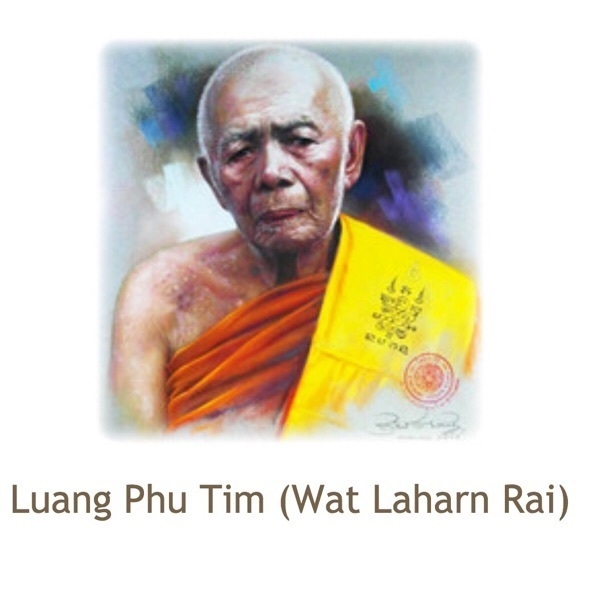
Luang Phor Tim’s Mother was the niece of Luang Pu Kroo Ba Sangkh, whose own mother was the younger sister of LP Sanglh Tao, making Luang Pu a beloved relative og the Great Guru Master Luang Pu Kroo Ba Sangkh Tao.
Luang Phor Tim was hence a direct grand nephew of the great Luang Pu Sangkh Tao, of Wat Geng Jeen, and this gave him easy access to beseeching Wicha from the Guru. LP Tim was ordained into the Sangha on the 7th of May 2449 BE, at Wat Tap Ma, with Pra Kroo Khaw of Wat Tap Ma as his Upachaya Ordaining Officer, Pra Ajarn Singh, as his Pra Anusawanajarn Witness, with Pra Ajar Gaet as his Pra Gammawajajaen Prompting Officer. His Ordination was held at the Putta Sima of Wat Lahan Rai, before entering the Uposatha Shrineroom for the final stage of ordination. He was given the ‘Chaayaa’ monk’s name of ‘Issarigo’.
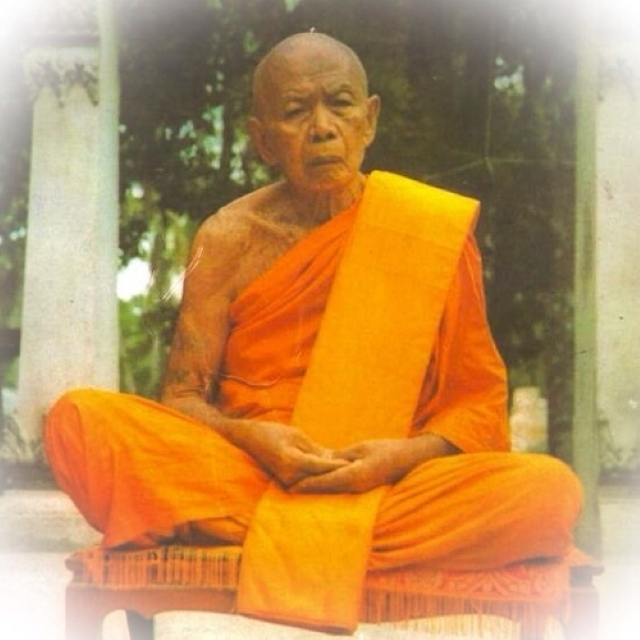
Once LP Tim was ordained, he immediately began to focus intensely on learning Magical Wicha from his Kroo Ba Ajarn as well as Lay Sorcerers and Ruesi Hermits, whom he encountered during his trajectory, as he was traveling the forests of Thailand during his early mid, and mid-late eras. When he eventually became older and highly experienced in Tudong, he returned to remain permanently at Wat Lahan Rai, and was elected to become the new Abbot of Wat Lahan Rai on the 5th December 2507 BE.
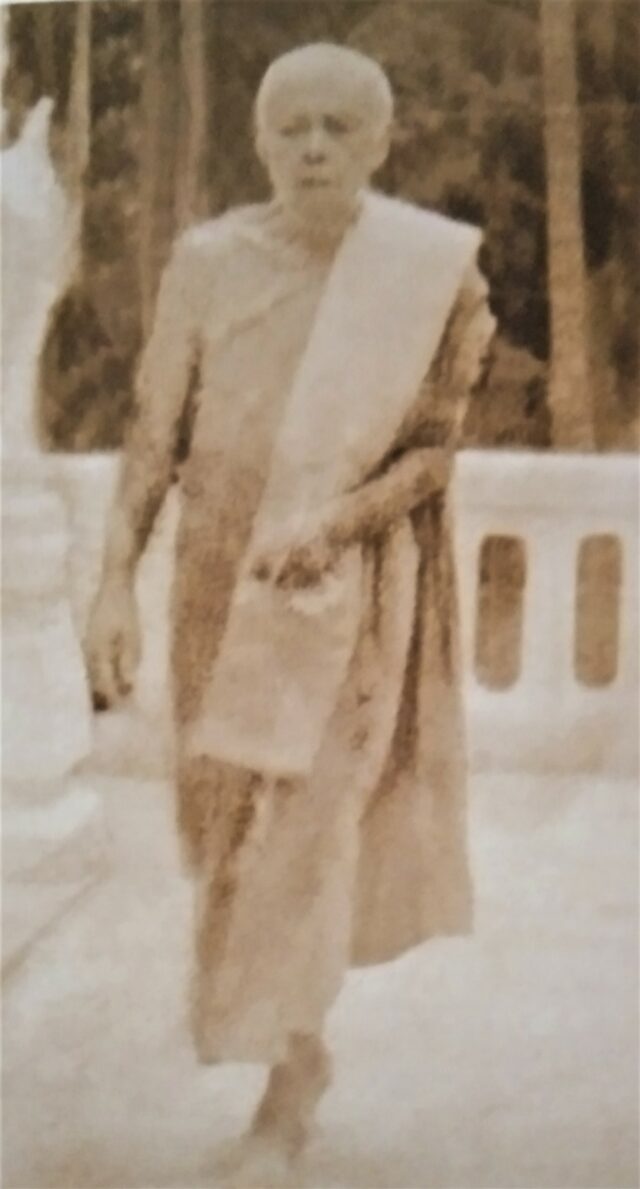
During his first year he spent time practicing under LP Singh and LP Sangkh Tao, but was highly set on Tudong 13 practices. Luang Phor tim hence asked for permission to go forth on the mystical pilgrimage known as Tudong 13, and went out into the jungle for a waljabout of around 3 years, before appearing again in Chonburi Province, where he stayed at Wat Na Madtoom for a period of 2 years. It was here that he met the great Lay Sorcerer Ajarn Rerm, Ajarn Rod, and Ajarn Say, during the full 2 years of his stay.
LP Tim was the real great nephew of Luang Pu Sangkh Tao, first abbot of Wat Lahan Rai. Luang Pu Sangkh Tao, was known nationwide as a powerful sorceror-monk with extremely effective magical abilities. LP Sanghkh Tao was not only the 1st Abbot of Wat Lahan Rai, he was also the founder and builder of the temple. It was tis fame that led devotees to invite LP Sangkh Tao, to come to empower amulets at Wat Geng Jeen, which resulted in the now immortally famous edition of leaden ‘Pra Nuea Takua Wat Geng Jeen’ amulets, which are now so rare, highly priced, and extremely sought after Master-Class amulets.
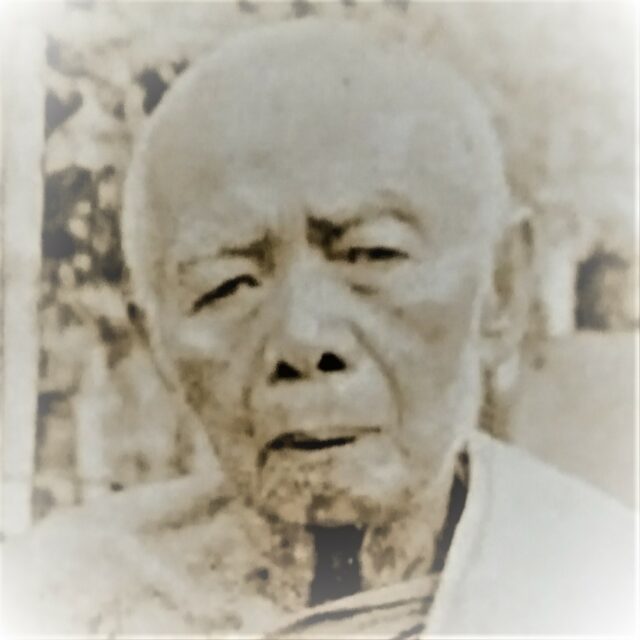
After a year it was necessary for LP Tim to Disrobe to help is family, during which time he was called for military duty for 5 years, from age 19 to 24. As soon as he was released from military duty, he immediately requested re-ordination as a Bikkhu again.
Luang Pu Tim Issarigo, was of course not only one of the most highly acclaimed and sought after Guru Monks for his amulets, he is the holder of the highest esteem in Thai Buddhist amulet history for Pong Prai Kumarn powders. Luang Pu Tim, has been Internationally Acclaimed, for his famous Pra Khun Phaen Pong Prai Kumarn, and Look Om powder balls. As to the classic ‘Rian’ type coin image amulets which have become all time favourites, and eternally, world famous classic amulets of the high end variety. His rian Jaroen Porn Bon and Jaroen Porn Lang, RianSema, Mae Nam Koo, Rian 2510 Run Raek, and Rian Nakprok Paed Rorp are amongst the most highly sought after coin amulets of all
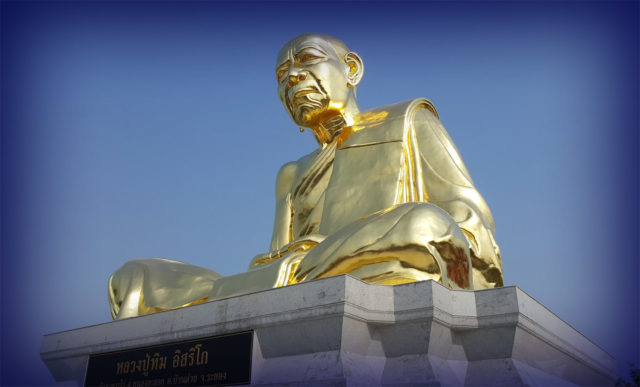
The making of the Muan Sarn Sacred Pong Prai Kumarn powders used by Luang Pu Tim in his famous Pra Pong Prai Kumarn amulets, came from the Wicha which Luang Pu had inherited through apprenticeship form one of his high Kroo Ba Ajarn, Kroo Ba Sangkh Tao, who was also his true Uncle. Part of the formula included Pong Prai Maha Puudt, which was made from the Skull of a male Kumarn who died in the Womb, and who died on a Saturday and was cremated on a Tuesday. This is part of the ancient Khmer Necromantic Formula for Authentic Powerful Prai Occult Magic, as practiced in Ancient Times. It is said that Pra Kroo Sangkh Tao’s Wicha Akom was so powerful that when he spat on the floor, the floor would crack where his spit would fall.
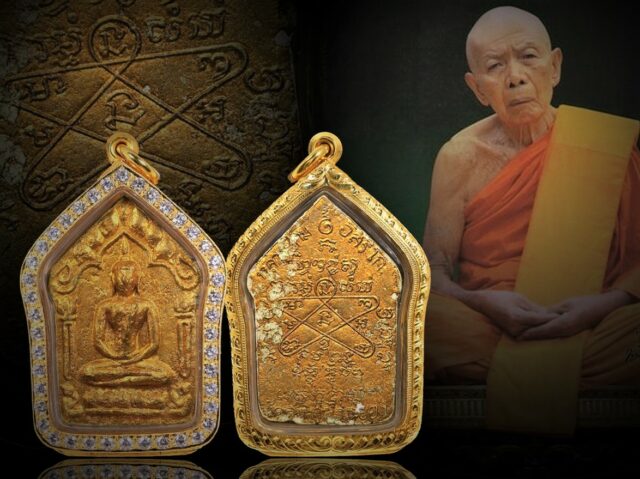
Due to the fact that Monks are not allowed to seek and find this Sacred and Extremely Powerful Necromantic Substance, Luang Pu would perform Korb Kroo Initiation for protection against Black Magic and the Phuudtaa Spirit Phantoms, so they could go forth to seek and find the substances to donate to him for the making of the Pong Prai Kumarn.
The Initiated Lay Devotees and Apprentices to his sorcery, would then wait for the news of the right circumstances of death of Kumarn Ghosts, and go out to collect the substances and prepare them as instructed with the Wicha. They would seek the permission of the relatives of the dead, to obtain the substances to enable the ghosts of the deceased to receive merits to free them from their Karmic residues by donation of their mortal remains to be made into amulets.
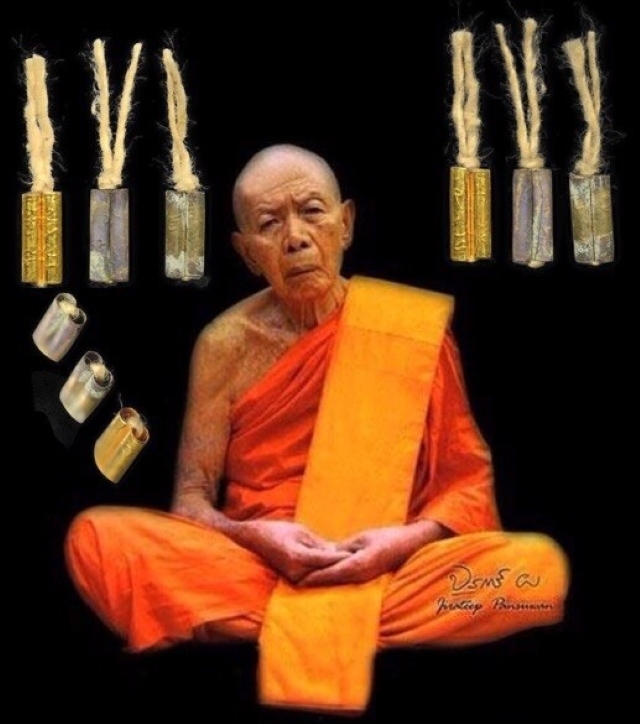
They would receive the ceremonial ritual liberation of their souls from Luang Pu Tim, who would speak with the spirits of the dead, to receive their acknowledgement for the process of transformation through the Nibbana Sutra, and the Muan Sarn would then be prepared according to the Dtamra Saiyasart of Necromancy, to make the Pong Prai Kumarn.
Luang Phu Tim was also highly famed for the Pra Kring Chinabanchorn Medicine Buddha statuettes
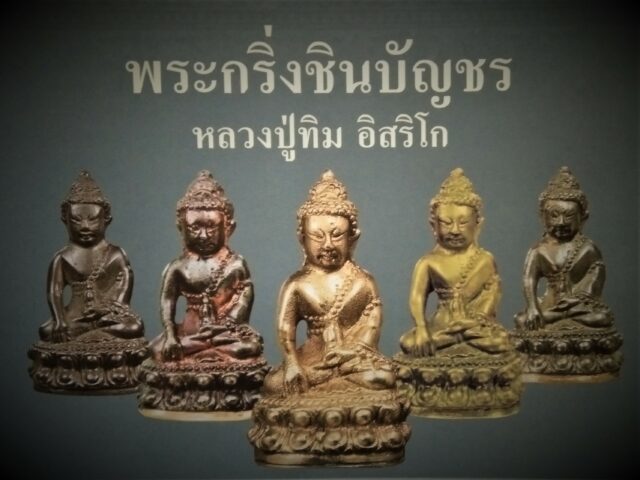
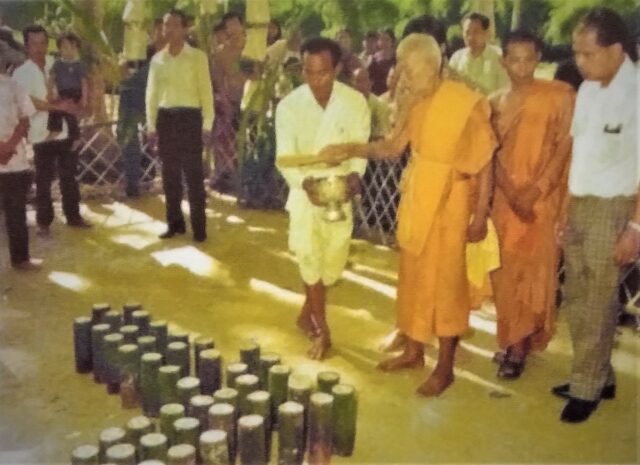
Luang Pu instructed his apprentices and the relatives of the Funerals to take care not to incinerate the whole skeleton, but to keep the skulls to bring to Luang Pu to use them for the making of the Pong Prai Kumarn. This is one of the reasons why his Pong Prai Kumarn is so powerful, because it does not contain the skeleton bone powders, rather, only those of the skulls.
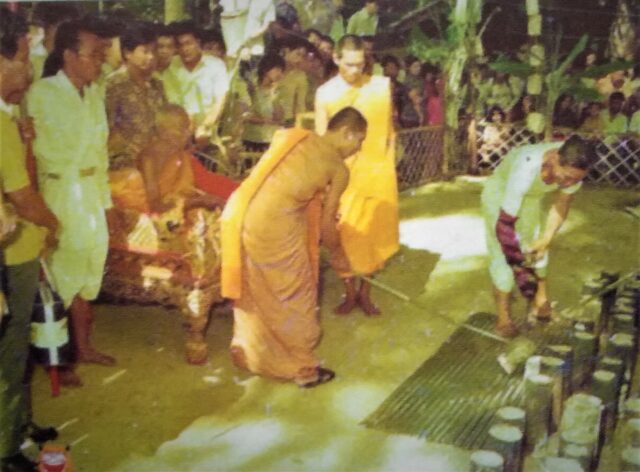
As a result, Luang Pu Tim’s Pong Prai Kumarn has been recorded by experience of devotees to posses the highest Maha Pokasap Power of all Pong Prai Kumarn ever made, with Immense Metta Maha Niyom and Klaew Klaad Power, to induce Mercy Charm, Attract Lucky Fortunes (e.g. Lottery Winnings), and to Protect from Deadly Accidents and Disasters.
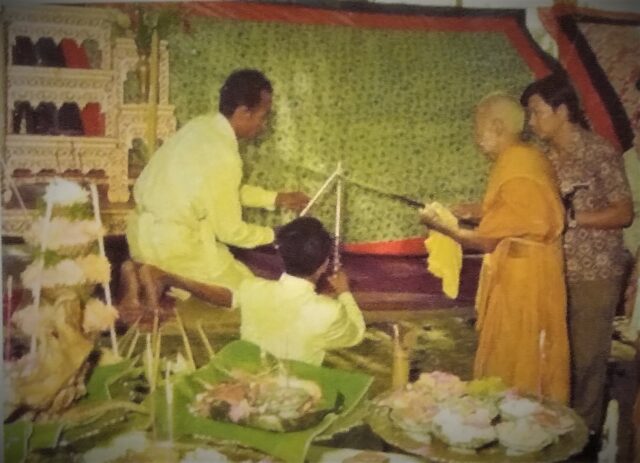
Since his passing, his devotees and apprenticed monks, have now become the world’s top living masters for the making of Pra Khun Phaen Pong Pra Kumarn, and literally dozens of encyclopaedic books, have been printed, documenting both this great master monk, and his classic amulets of high esteem.
Buddhist monk coins with his image and others with Buddha images and other deities and imagery are amongst the most highly collected amulets and most expensive of all of the great Luang Pu Tim. He has various direct lineage apprentices, Who are continuing to progress and spread his most powerful and world-famous Wicha.
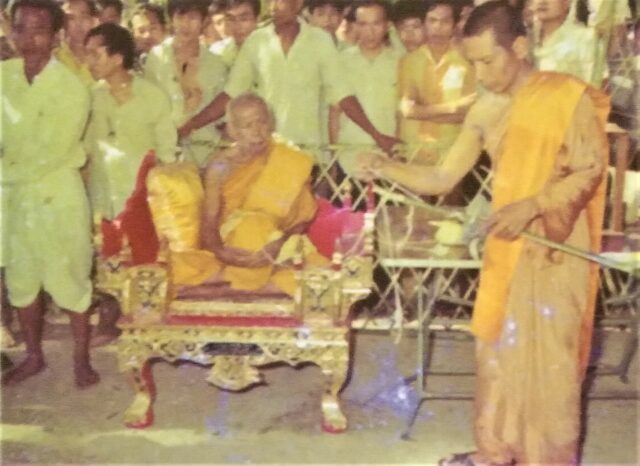
Of all of these masters, certainly the most famous, preferred and highly respected Looksit, was Luang Por Sakorn, of Wat Nong Grub, who is also now deceased, and whose amulets are fast becoming just as highly sought after. Following this Master, one could possibly estimate the great Luang Pu Sin, of Wat Lahan Yai, Luang Por Rat of Wat Pha Hwaay, Luang Por Foo of Wat Bang Samak, and Pra Ajarn Somkid, of Wat Beung Tata (Rayong).
Luang Pu Tim remained for gis first year of ordination with Pra Ajarn Singh, whi;st learning simultaneously his magical studies with Kroo Ba Sangkh Tao. LP Tim was an avid student of the Tripitaka Buddhist Canon too, and became extremely well versed in the true rules and practices of a Buddhist Monk as seen in the times of the Lord Buddha. LP Tim is considered to be stranger and more mysterious than many other famous Guru Monks, in the sense that usually, a monk will spend minimum 5 years in the temple before his Kroo Ba Ajarn takes him on Tudong forest wandering practice. But Luang Pu Tim was already begging to go after his first semester at the temple wit Ajarn Mindfulness Practices under many Great Masters who came back and forth to and from the temple.
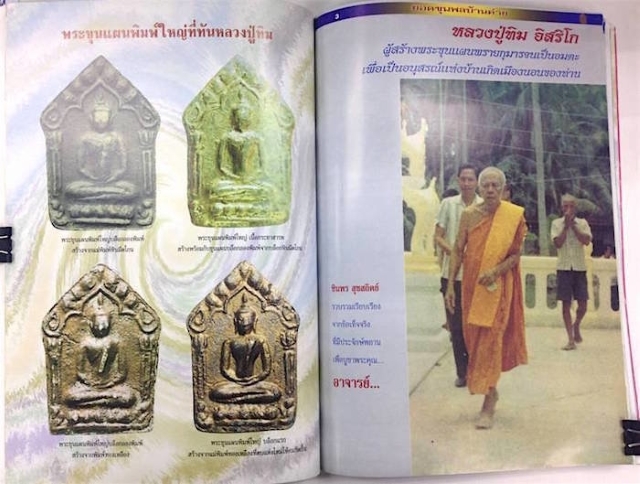
After this, Luang Pu Tim returned to stay at Wat Lahan Rai again, which at that time was still known as ‘Wat Rai Waree’, and began to practice fully fledged Vipassana Kammathana M
The temple of Wat Lahan Rai was known as Wat Rai Waree, because it was surrounded by water (Waree meaning ‘water’ in Pali Sanskrit). The jungle around it was very dense and full of dangerous and poisonous beasts and plants, and it was said that anyone who wandered in there would lose their way and be lost for certain. But Luang Pu Tim was known to have walked through it alone as a short cut on his wanderings, without any harm befalling him. But the difficulty of access to the temple became apparent to him this way, and he decided he needed to develop the temple and its access routes.
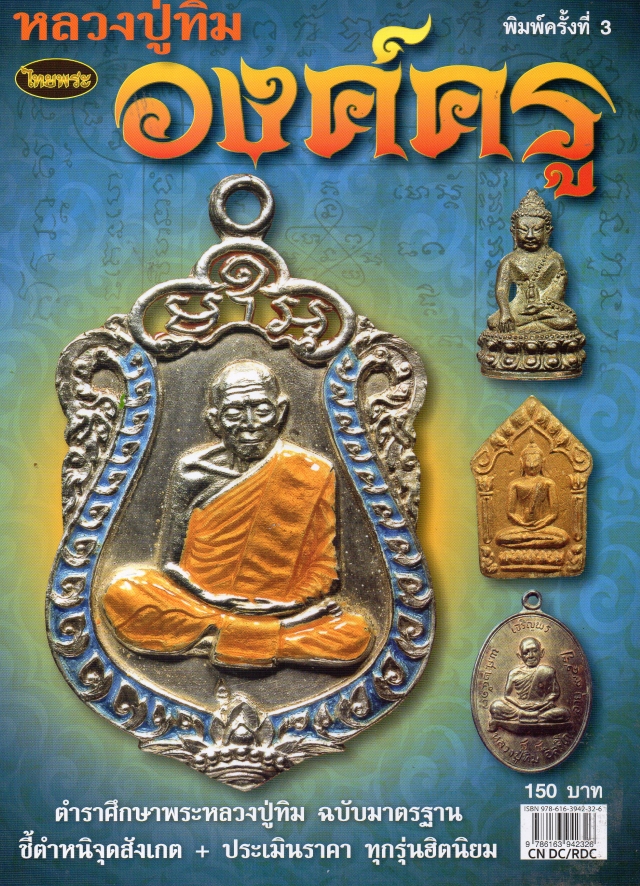
In the year 2515 BE the name of the temple was changed officially from Wat Rai Waree to Wat Lahan Rai, in honor of Luang Pu Tim’s great acheivements in developing the temple, and he was given the title of Pra Atigarn Luang Pu Tim Issarigo, Abbot of Wat Lahan Rai. A massive series of amulets were released to celebrate the occasion, including the now world famous Khun Phaen 2515 BE Amulet, which now fetches into the many thousands of dollars in price, and is highly appreciated and worshiped around the Globe.
LP Tim became extremely revered very quickly after becoming abbot of Wat Lahan Rai, as he built an Uposatha Shrine Room (the most expensive of all buildings to mak in a temple), in a perios of one single year, which usually takes 5 to 10 years to complete. The speed of his attainments and the massive support he received from his devotees was miraculous in itself. LP Tim also built many other facilities for the temple including Kuti Huts for monks to stay, crematoriums, chedi stupas, Sala Bprian Dhamma Salons, Life Mecessity based facilities such as showers and toilets, and Shrines.

His self discipline and strictness with his own practice was a cause of his devotees having great faith in his purity of intent and practise, and self renunciation.
Once he achieved the building of the Uposatha, he built the Putta Sima wall to encircle the shrineroom, as is traditional. This was achieved in the year 2483 BE, and of course, amulets will have been distributed, from the ‘{ra Chud Boran’ Ancient early era amulets of LP Tim, to commemorate this occasion. This shows just how many decades earlier LP Tim was actively making amulets than the Bankokian High End Salesroom Monopolists ever claimed.
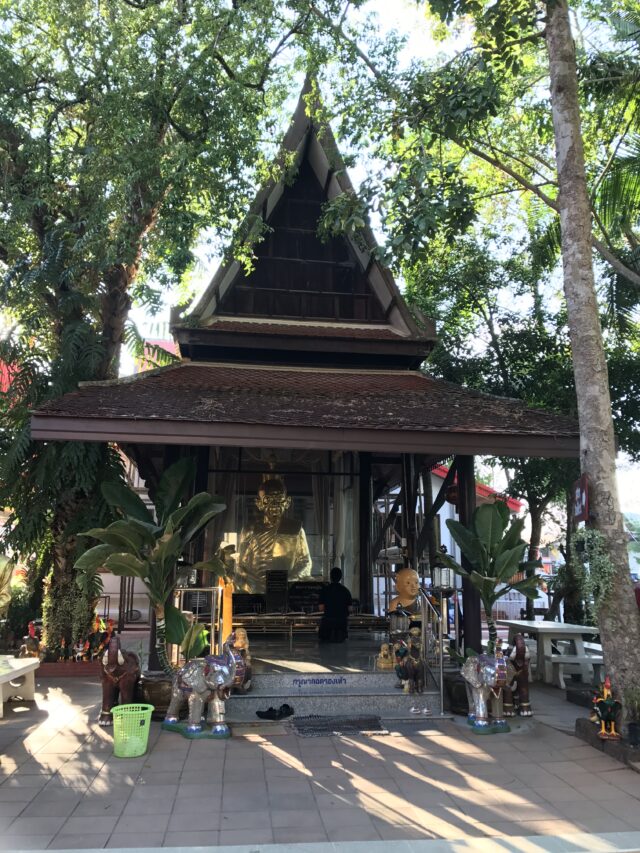
Luang Pu went on to build a school in the year 2483 BE, to give an education to the children of the local poor folk.Tis happened after Luang Pu began to teach kids in the Sala Bprian Dhamma Salon, and the local Devotees saw fit to ask Luang Pu to build the Akarn Rien schoolroom. Once more, the job was finished in record time of only 8 months, leading devotees to have even more faith in the merits to succceed quickly possessed by Luang Phor Tim. LP Tim built many bridges across streams for farmers to transport their crops more easily, free food halls, and many other charitable projects. It is believed by devotees that Luang Phor Tim had achieved Sotapannahood (a stage of enlightenment), and this is one of the reasons for him being one of the most highly revered monks in Thai amulet history.
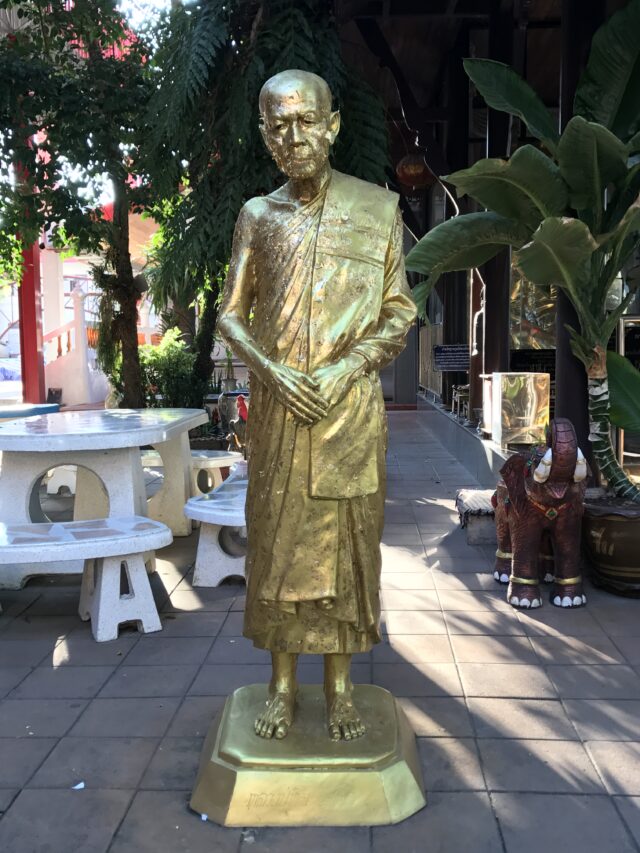
LP Tim was awarded Royal status decrees on various occasions in recognition of his merits, such as receivuing the title of Pra Kroo Pratuan in the year 2478 BE, and Pra Kroo Sanyabadtr, and in 2497 BE, was awarded the title of ‘Pra Kroo Pawana Pirat’. At first, LP Tim refused these titles as he did not lend them any importance, but in the end was forced to accept due to repeated requests for him to accept made the Sangha bestow the titles upon him in his absence, and he found out about it later from his devotees, who heard about the news.
This was then when the Looksit of Luang Pu Tim saw fit for the making of the rian run raek 1st edition coin to be made, in commemoration of the occasion, which was then released in ceremonial blessing in 2508. Many magazines and societies get the date wrong with this amulet, stating it to be 2510 or 2512 BE, whereas in truth, the amulets were made as ‘Luean Samanasak’ (raise in status) edition, when LP Tim received his Royall Title in 2507.
Luang Pu Tim was known to have loved solitude, and have practiced very strictly with is own behavior, speaking little, and following the practices of the Buddha. He was also a vegetarian, and would oly eat rice, beans and vegetables from offerings given. Often he would just eat rice wit salt mixed into it, so simple were his needs.
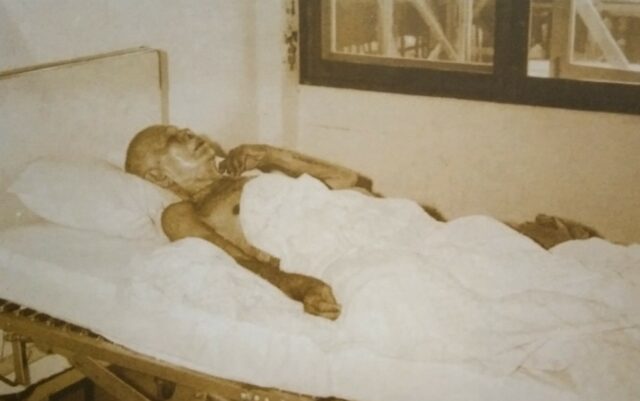
Luang Pu Tim passed away from old age at 11 p.m. on the 16th October 2518 BE in front of the prayer room, at Wat Lahar Rai. His mortal remains were kept for 100 days of worship and grievance, and then taken to a mausoleum at Wat Lahan Rai, after which his cremation was held some 8 years later, on on the 16th March 2526 BE
